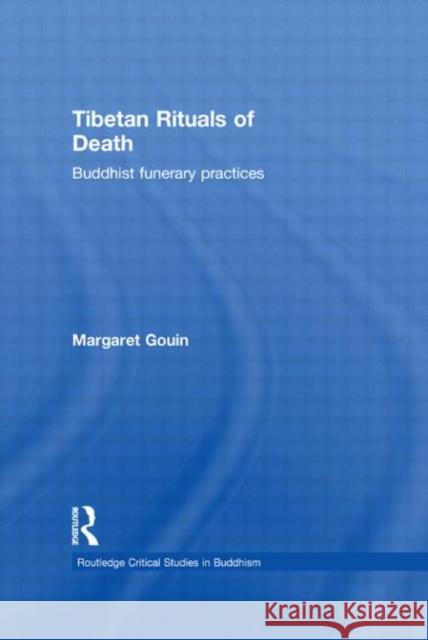Tibetan Rituals of Death: Buddhist Funerary Practices » książka
Tibetan Rituals of Death: Buddhist Funerary Practices
ISBN-13: 9780415566360 / Angielski / Twarda / 2010 / 208 str.
Tibetan Rituals of Death: Buddhist Funerary Practices
ISBN-13: 9780415566360 / Angielski / Twarda / 2010 / 208 str.
(netto: 749,55 VAT: 5%)
Najniższa cena z 30 dni: 730,42 zł
ok. 16-18 dni roboczych.
Darmowa dostawa!
This book describes and analyses the structure and performance of Tibetan Buddhist death rituals, and situates that performance within the wider context of Buddhist death practices generally. Drawing on a detailed and systematic comparative survey of existing records of Tibetan funerary practices, including historical travel accounts, anthropological and ethnographic literature, Tibetan texts and academic studies, it demonstrates that there is no standard form of funeral in Tibetan Buddhism, although certain elements are common. The structure of the book follows the twin trajectories of benefiting the deceased and protecting survivors; in the process, it reveals a rich and complex panoply of activities, some handled by religious professionals and others by lay persons. This information is examined to identify similarities and differences in practices, and the degree to which Tibetan Buddhist funeral practices are consistent with the mortuary rituals of other forms of Buddhism. A number of elements in these death rites which at first appear to be unique to Tibetan Buddhism may only be 'Tibetan' in their surface characteristics, while having roots in practices which pre-date the transmission of Buddhism to Tibet. Filling a gap in the existing literature on Tibetan Buddhism, this book poses research challenges that will engage future scholars in the field of Buddhism, Tibetan Buddhism and Anthropology.
This book centres on funeral rituals in Tibetan Buddhism with particular emphasis on their structure and performance. Drawing on historical travel literature, anthropological studies and ethnographic literature, as well as Tibetan texts and existing academic studies, the book describes and analyses Tibetan Buddhist funeral rituals from the earliest available records up to the present. It demonstrates that there is no standard form of funeral in Tibetan Buddhism, although certain elements are shared.
The structure of the book follows the twin trajectories of benefit and protection, and in the process reveals a rich and complex panoply of activities, some handled by religious professionals and others by lay persons. Many rituals take place between death and disposal of the body.
In addition to providing detailed information on these various activities, the book analyses the information to identify commonalities and differences in practices. The degree to which Tibetan Buddhist funeral practices are consistent with the mortuary rituals of other forms of Buddhism is also discussed, as are the elements that appear to be specific to Tibetan practice. The author suggests that a number of elements in these death rituals which at first glance appear to be unique to Tibetan Buddhism may only be âTibetanâ in their surface characteristics, while having roots in practices which pre-date the transmission of Buddhism to Tibet.











